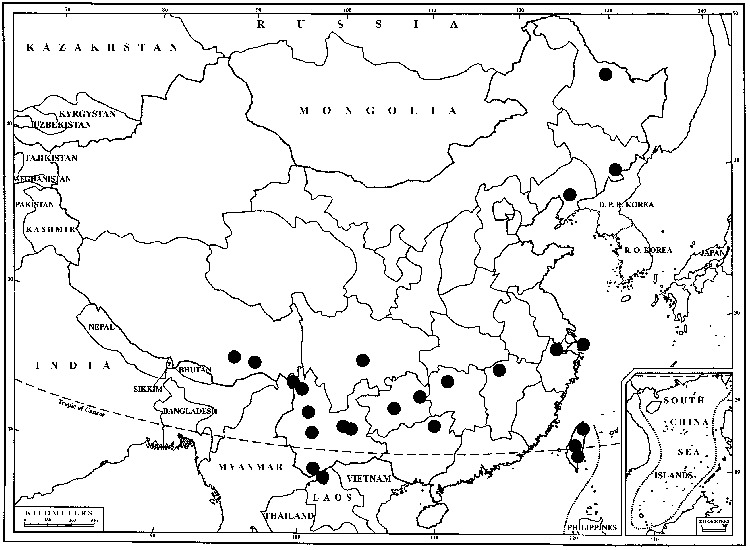Fissidens taxifolius
Sp. Musc. Frond., 155, plate 39, figs. 1–5. 1801,.
Plants to 11 × 3.5 mm. Stem mostly branched; axillary hyaline nodules absent; central strand present. Leaves as many as 15 pairs, often undulate, oblong to lanceolate, obtuse to broadly acute, cuspidate, to 2.7 mm × 0.6 mm; dorsal lamina truncate-rounded proximally, ending at insertion, not decurrent; vaginant laminae 2/3 the leaf length, ± equal, minor lamina ending on or near margin; margin evenly serrulate, often crenulate-serrulate on dorsal and ventral laminae, elimbate; costa ending in cuspidate apex, taxifolius-type; laminal cells 1-stratose, distinct, smooth, bulging, firm-walled, irregularly hexagonal, 8–11 µm frequently paler at margin, conspicuously mammillose in vaginant laminae, larger and clearer juxtacostally. Sexual condition rhizautoicous; perigonia on short branches proximal to elongate stems; perichaetia on short, proximal, axillary branches. Sporophytes 1 per perichaetium. Seta to 17 mm. Capsule theca slightly inclined, slightly arcuate, bilaterally symmetric, to 1.5 mm; peristome taxifolius-type; operculum to 1 mm. Calyptra cucullate, smooth, to 2 mm. Spores 13–18 µm.
Habitat: Damp, shaded soil, humus, and rocks
Distribution

N.W.T., N.S., Ont., P.E.I., Que., Ala., Ark., Ariz., Calif., Del., D.C., Fla., Ga., Ill., Ind., Iowa, Kans., Ky., La., Maine, Mass., Mich., Miss., Mo., Nebr., N.H., N.J., N.Y., N.C., Ohio, Okla., Oreg., Pa., S.C., Tenn., Tex., Vt., Va., Wash., W.Va., Wis., Mexico, West Indies, Central America, South America (Brazil and Chile), Europe, Asia (China), Asia (Japan), Pacific Islands (New Zealand)
Discussion
Fissidens taxifolius is distinguished by evenly serrulate or crenulate-serrulate leaf margin, stout costa ending in leaf cusp, conspicuous mammillose cells in the vaginant laminae, and sporophytes on short branches in the axils of proximal leaves. It can be confused with F. bushii, but that species is smaller, has costa shorter, and cells in the vaginant laminae have small, more or less inconspicuous papillae in the corners of the walls. Fissidens taxifolius usually occurs on shaded, damp soil or humus, whereas F. bushii is usually found on disturbed soil in woods, along paths, and in road cuts. Fissidens clebschii is considered to be a freakish expression of F. taxifolius (R. A. Pursell 2003).
Selected References
None.
Lower Taxa
No values specified."/2" is not declared as a valid unit of measurement for this property.
